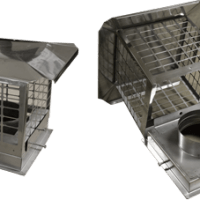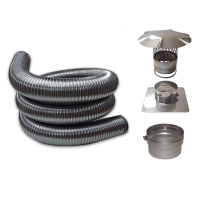By: Paul Glover
Unlike in the past, we don’t need nor necessarily use fireplaces for warmth. Today, we use fireplaces for aesthetics or to create a warm atmosphere within a home. Although they aren’t required, fireplaces have a unique way of turning a house into home.
Perhaps because they aren’t required, it can be difficult to find a brand new home that’s already furnished with a fireplace. Since the development of central heating, they’ve almost disappeared! To find a home with a fireplace, one had to specifically seek them out and settle for a home build in an earlier decade or even century.
Definition
Fireplaces follow a simple structure: a Wall opening leading to a chimney. But it’s what they’re made of and their different sizes that lend to different styles. Some are traditionally large and made of brick while others are smaller and made of a smooth, heat/fire proof material. Essentially, they all radiate heat into a room while sending smoke and carbon monoxide up its shaft (chimney). Required to burn wood, drafts in the home are controlled by adjusting a fireplace’s damper – also used to prevent downdrafts from entering into the chimney itself.
History
Where did the Fireplace originate? Well if you can call a portable metal pot that’s capable of containing heated material and dispensing heat across an enclosure, then we can say that fireplaces originated in ancient Egypt and Greece! The ancient Romans invented something similar to a fireplace called a hypocaust – a furnace connected with a series of small chambers and flues of tiles through which the heat of a fire was distributed to rooms above. But it was in the 13th century that the Roman chimney was invented, and the 600 BC stove that brought us the fireplace that we’re all familiar with today. 600 BC Chinese stoves were made with porcelain covered bricks and they too, passed smoke through a chimney.
The early American cast-iron stove as a fireplace was used for heat, cooking, and even drying laundry. Over time, the fireplace has gone through several designs – all of course hoping to improve heat efficiency and reduce carbon monoxide poisoning.
Current Usage
We don’t cook in fireplaces today, however we can and should use them to reduce energy bills. In fact, the wood stove was widely used during the early 70s energy crisis and because of today’s energy faux pas, interest in fireplaces has peaked again. Application If you’re thinking about having a fireplace installed, be sure to look at some of the more intriguing designs available today. A square brick fireplace just isn’t your only option and more than a few are simply beautiful. You’ll want to discuss the options that available with your contractor and also investigate the different exhaust systems that you can use. This is particularly important for housing that’s uniquely shaped, like a ’round’ house for example. If your home is prone to strong drafts, you’ll want to talk about flanking your fireplace with ducts. With the use of flanking, your fireplace will attract cooler air through the ducts, heat it, and send it back into your home, warmer than before.
Paul White represents FloridaHomeBuild.com. A site designed to help home owners from Florida locate local home contractors with their home improvement projects. Visit Our Site : http://www.FloridaHomeBuild.com





